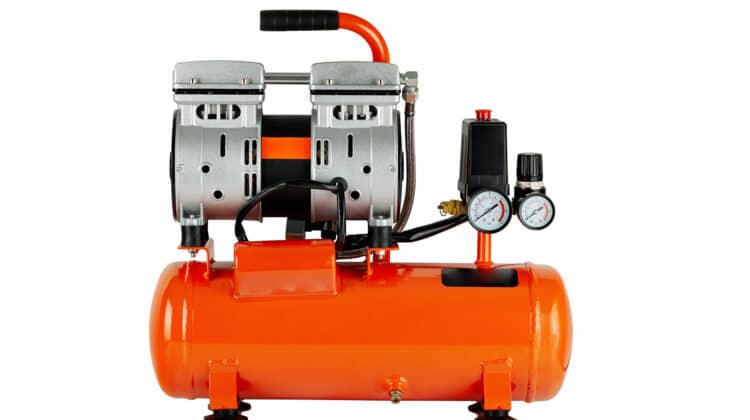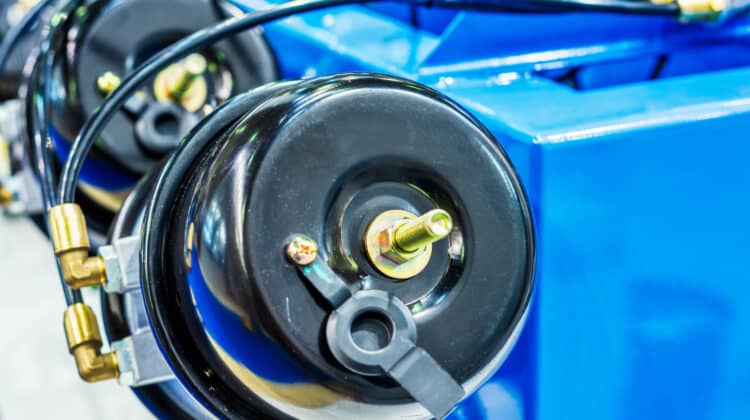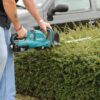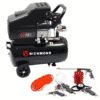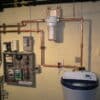Table of Contents
How does a governor on an air compressor work?
The governor is directly connected to the air compressor. At the side of the air compressor governor, there are three ports on its outermost part: the inlet port, the unloader port, and the exhaust port.
At the lower part of the governor, there is the piston. The exhaust stem and its spring, inlet/exhaust valve, and spring are all located within the piston.
The inlet port is the link between the governor and the air storage tank it regulates. As the air pressure in the storage tank rises, the inlet/exhaust valve in the piston pushes up against the resistance of the pressure control spring.
Immediately the air pressure increases, reaching the ‘cut-out limit’, the exhaust stem propels the inlet/exhaust valve open. This will block air from getting out of the exhaust port, however, it has also created an open space from the piston which links the inlet port to the unloader port.
Here, the air in the inlet port escapes from the unloader port, releasing the air compressor and causing the air dryer purge cycle.
While the storage tank’s pressure is about the cut-in limit, the piston will remain shifted. Once the air compressor reduces its pressure below the cut-in limit, the pressure control spring will force the piston back to its initial position.
The inlet/exhaust valve will be closed again while the exhaust stem gate will be reopened causing the air from the unloader port to escape through the exhaust stem and out through the exhaust port.
However, if the air from the unloader port is unable to move out from the exhaust port, the air compressor will not be able to build pressure. To avoid this, the exhaust port should not be plugged in.
How long does it take to build air pressure?
On average, it takes 45 seconds or less to have air pressure build up from 85 pounds per square inch (PSI) to 100 PSI. However, when it comes to a vehicle with a single air brake system, air pressure build-up from 50 to 90 PSI should take two to three minutes.
For proper air system operation, always observe the pressure gauge during build-up as you drive. Make a two-minute leakage test by making and holding a full brake application while observing the air pressure gauge.
What is cut in, cut out pressure?
These are simply the two pressure points on an air compressor. These pressure points either load or unload the compressor, that is starts or stops it on a constant speed application.
The cut-out pressure is the maximum pressure. When the air compressor rises and reaches the cut-out pressure point, it will stop and no air will be delivered into the system.
On the other hand, the cut-in pressure is the minimum pressure point. It is the pressure level that the system is permitted to fall to before air volume is needed again. When the pressure falls back to the cut-in pressure, the compressor will start pumping again.
How to set up the regulator of an air compressor
To operate your air tools appropriately, it is important to set up your regulator pressure correctly. As such, every time you use the compressor, it should be properly set up.
This will also improve lives and reduce the risk of wear on the air tools. In most cases, air compressors are designed in such as way that you can set it up easily so setting up your air compressor regulator shouldn’t be a challenge.
That said, here are some simple steps to take in order to set up the regulator of an air compressor.
Step 1: On your air tool manual, check for the required PSI settings
This should tell you how much PSI of pressure is recommended in order to operate it. This information might also be on the tool itself as a sticker on the handle or on the bottom of the tool.
To operate, some air tools require more PSI of air pressure than the compressor’s tank can accommodate. In this situation, a larger air compressor tank is required.
Another way to do it is to get a tool that can operate utilizing less pressure.
Step 2: Locate the needle on the outlet pressure indicator close to the air hose
This will tell if you need to increase or decrease the output pressure.
To increase the output pressure, turn the knob clockwise; to decrease it, turn the knob counterclockwise.
Generally, you would need to adjust the regulator a bit higher than the air tool’s requirement to compensate for the pressure drop of the air piping.
Step 3: Try out the tool to gauge the right pressure
Try out your tool to determine if you need to reduce or increase the pressure as you may need to adjust your tool if there is a drop in pressure.
Why does my air compressor not shut off?
If you observe that your air compressor is running for a longer period of time, that is, it is unable to reach the cut-out pressure point and can’t shut off, there are some factors to consider.
More often than not, the reason an air compressor won’t shut off is either due to an internal gasket leak in some other part of the system or a stuck pressure relief valve.
Other factors to consider include:
- Bad pressure switch
- Faulty air tank gauge
- Clogged filters
What does the air dryer do on a truck?
On commercial trucks or motor coaches, the air dryers are installed between the compressor and storage tanks.
The job of the air dryer is to sieve out the contaminations such as water, oil vapor, and others preventing them from reaching the reservoirs, air brake system, and valves. These contaminations can be solid or liquid or even aerosol. This helps foster the efficient operation of the system and extends its life span.
How do air brake systems work?
Air brakes make use of air in place of hydraulic fluids. As you know, the air is everywhere.
Hydraulic fluids on the other hand are not readily available and can run out if there is a leak. This is why buses, trucks, and trailers rely on air for car braking systems.
When the brake pedal is pushed down, the brakes are applied. As more force is applied on the brake pedal, more pressure is equally applied from the reservoir into the brake chambers. This air pressure is built up by the air compressor.
What does an unloader valve do in an air compressor?
The unloader valve in the air compressor is a small but important part. It blows off the remaining air trapped in the piston to vent into the atmosphere when the motor turns off. It also releases any load creed over the cylinder by the trapped air.
